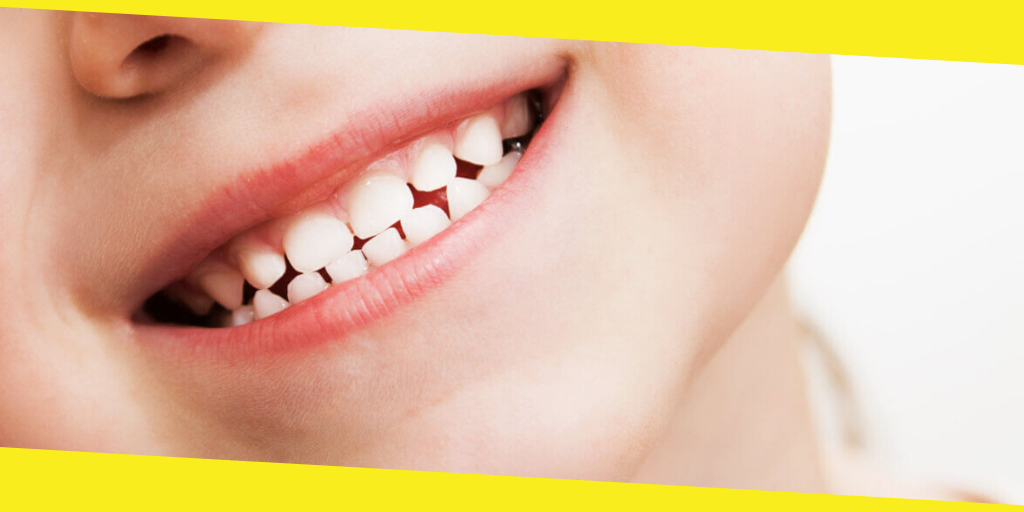Here’s Everything you Need to Know About Baby Teeth and Permanent Teeth

Our teeth are a vital component of our metabolic system. They help us break down our food and take care of this crucial and first stage of digestion. Without them, will you be able to bite into an apple or enjoy your favorite burger? Also, let’s not forget they are what make our smile beautiful.
Throughout our lifetime, we have two different types of teeth. The first ones that sprout when we are babies are known as baby teeth or milk teeth, and they are temporary. They start falling once we cross the age of 6 or 7 and are replaced by our permanent teeth, which are also known as adult teeth. Then there are the molars, which sprout for the first time in our teens or later and stay with us forever. In this article, you will find everything you need to know about milk teeth and adult teeth, their parts, and more.
Contents
ToggleMilk Teeth
Milk teeth are the first set of teeth that we get as babies. They start coming out between 6 months and one year of age and keep sprouting till the age of 3 years. Around this time, your child will have a complete set of 20 teeth in their mouth that is going to stay for a few years to come. In this period, these teeth are going to help your child to eat, and hence, they have to be taken care of just like permanent teeth.
Any problem in them like cavities or decay can lead to unnecessary hassles like tooth extraction. Your child needs to keep every baby tooth in good condition till they are ready to fall off and make way for the permanent teeth. Milk teeth start falling out around five years of age and are quickly replaced by bigger and stronger adult teeth.
Adult Teeth
It is ubiquitous to lose all the baby teeth by you are 12-14 years old. Your child will have a mouth full of adult teeth in his/her teens and may also start sprouting the molars. A full set of adult teeth means 32 teeth, which include the wisdom teeth that pop out at the back of the mouth. It’s also true that some teenagers/adults do not sprout wisdom teeth at all. You should discuss your child’s situation with your doctor as and when needed. A dentist will be the right person to guide you with proper examination and procedures like an X-ray.
On the other note, your child may experience some issues with the wisdom teeth. These teeth are well known to create all sorts of problems by coming out wonky, which causes a lot of pain and may need to be removed. Again, the removal process of wisdom teeth can be simple and performed using local anesthesia, but, in some cases, it might need to be extracted under the effect of general anesthetic in a hospital. Every child is different, so is the nature of teeth that they grow. The best way to deal with permanent teeth and wisdom teeth is to pay regular visits to your dentist and practice good oral hygiene.
Different Types of Teeth in Our Mouth – Based on Structure and Function
Incisors
These teeth are located in front of our mouth. They are used to biting the food and breaking it into small chunks. We all have four incisors on the top and four on the bottom. These teeth are one of the sharpest in our mouth.
Canine
Canine teeth are a set of sharp teeth that help in tearing chewy food like meat. We all have 4 of these teeth, two on the top and two on the bottom. Canines are right next to the incisors in our mouth.
Premolars
A full set of adult teeth contains eight premolars, four on the top and four on the bottom. These teeth are located right next to the molars and perform the critical job of grinding the food before it is swallowed. Premolars have a flat surface, unlike the other teeth that have the task of biting and tearing.
Molars
Molars grow in at the end of our mouth and are the strongest in our mouth. An adult mouth has eight molars, four on the top and four on the bottom. These teeth are also responsible for grinding the tooth into a fine paste that can directly go down to the stomach.
Parts of Our Teeth
- The topmost part of our teeth is known as the crown.
- Enamel is hard and shiny, and it is what covers the crown and protects the teeth from external factors.
- Then comes dentine, which is the inner part that makes up the teeth and protects the pulp.
- The pulp of teeth is the place where all the nerve endings are present. Proper blood supply to these nerve endings keeps the teeth alive.
- Then there is cementum, which protects the root of the tooth and also hosts the pulp.
- There are periodontal fibers that connect the tooth to the jawbone.
Our teeth are precious parts of our body. They have to be taken care of against injury, damage, and decay because they do not grow back, and fixing any issue with them is extremely painful. Teach your children the importance of oral care from an early age. Furthermore, please put them in the habit of visiting a dentist regularly. Rosewell Pediatric Dentistry is an excellent facility for children. This center has all the latest equipment and is run by a competent staff that is trained in handling the oral health care needs of children. Call now to book an appointment.
Recommended For You
What to Eat When Working at Office?
Most Inside
Most Inside offers high-quality recommendations and valuable updates to enhance all aspects of your life, providing premium guidance and enriching experiences.




